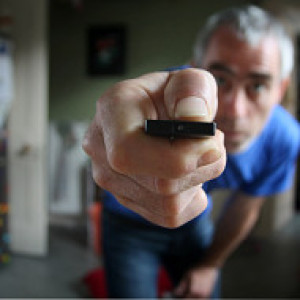A Brief Introduction to my Science
A very brief and simplified Introduction to my science.
This is Dictysotelium, Dicty for short, and is the organism I spend my scientific life studying at the University of Dundee.
Dicty cells live as amoeba (a single celled organism) in soil, feeding on bacteria. What makes them interesting and important for the scientific work we do, is what they do when they get hungry.
When there are no more bacteria to eat, about 100,000 Dicty cells get together and change in to a complex, multicellular organism which develops into a structure which can move through the soil, eventually forming spores (similar to fungi/mushrooms) which propogate the organism into new areas, with more food.
The process by which Dicty change from a single celled amoeba into a multicellular organism is called differentiation and is a similar process to the early stages of development of a foetus. In many human deseases, including cancers, the biological processes that go wrong are differentiation processes. So Dicty can be used as a very simple model for human differentiation and how it may impact on disease.
In our lab we can starve Dicty cells and allow them to go through their developmental cycle, which takes about 24 hours.
This set of pictures (clockwise from top left) are taken at 11, 13, 15 and 18 hours after starvation. About 100,000 Dicty cells aggregate together to form mounds of cells which elongate in to a finger like structures which then forms a stalk with a mass of spores at the top.
The structures in bottom right are visible to the eye, perhaps 3-4mm.
- 0
- 0

Comments
Sign in or get an account to comment.


